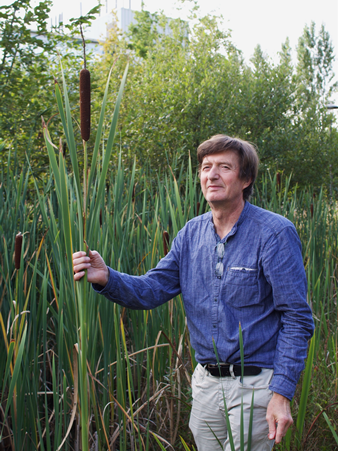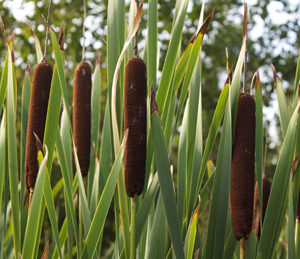Local name: Broadleaf cattail
Scientific name: Typha latifolia
Flowering time: late summer to late autumn
Location on campus: behind Lumen next to the small pond
‘In the Netherlands there are two species of this genus: Typha latifolia and Typha angustifolia – the broadleaf and narrowleaf cattail respectively. Both species are aquatic, but where the broad-leaved species lives in swampy ponds, the narrow-leaved occupies (the margins of) bigger lakes. As is often the case, the etymology of the name is unsolved. Typha may derive from the Greek word tiphos (marsh land or water body) or from the word typhe, which means cattail, referring to the form of the fruitage. A number of other colloquial names exist such as the rietsigaar (reed cigar) or duivelsknuppel, which means “devil’s stick”.

‘I fondly recount that when I was young I would often go to the wetlands, collect a bunch of these stems and bring them home to decorate my room. The issue, however, is that the brown cylindrical flower heads of this plant produces lots of white fluffy seeds. So after a few weeks, our whole house was covered in fluff! I really don’t know why my parents never complained. If you go visit the Lumen-pond, you too will see the fluff accumulating in the coming weeks.
‘You will find this species all around the world as it is not bound to specific climate regimes but rather is ‘azonal’, meaning it can grow wherever the appropriate wetland conditions occur. Another exciting fact about this plant is that it is used for phytoremediation – meaning it can help clean water.’
Text and photo Julia van der Westhuyzen | story Joop Schaminée

 Broadleaf cattail at Lumen.
Broadleaf cattail at Lumen. ![[Seriously?] The Gulf of WUR](https://www.resource-online.nl/app/uploads/2025/02/WEB_DeNeus.png)

